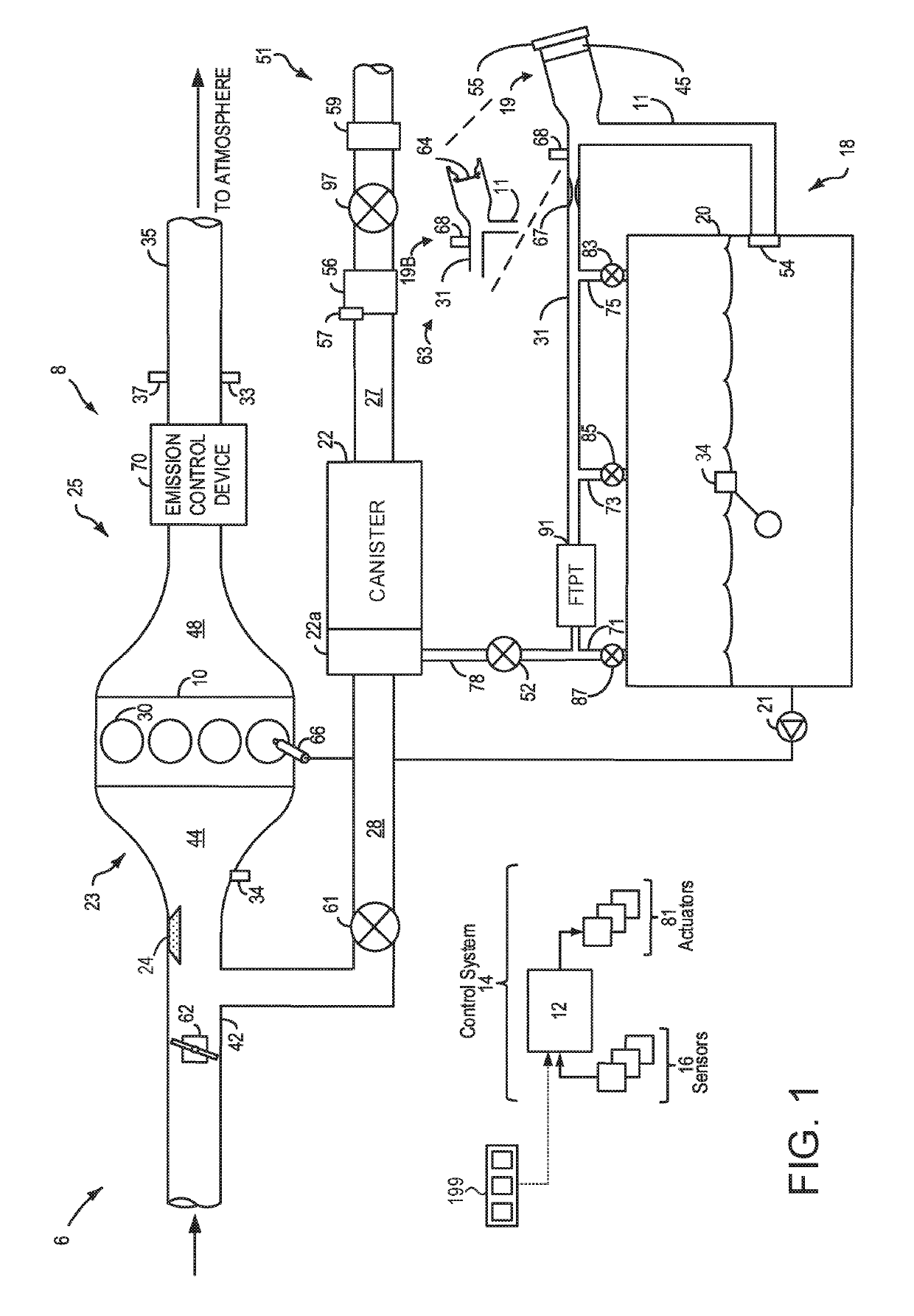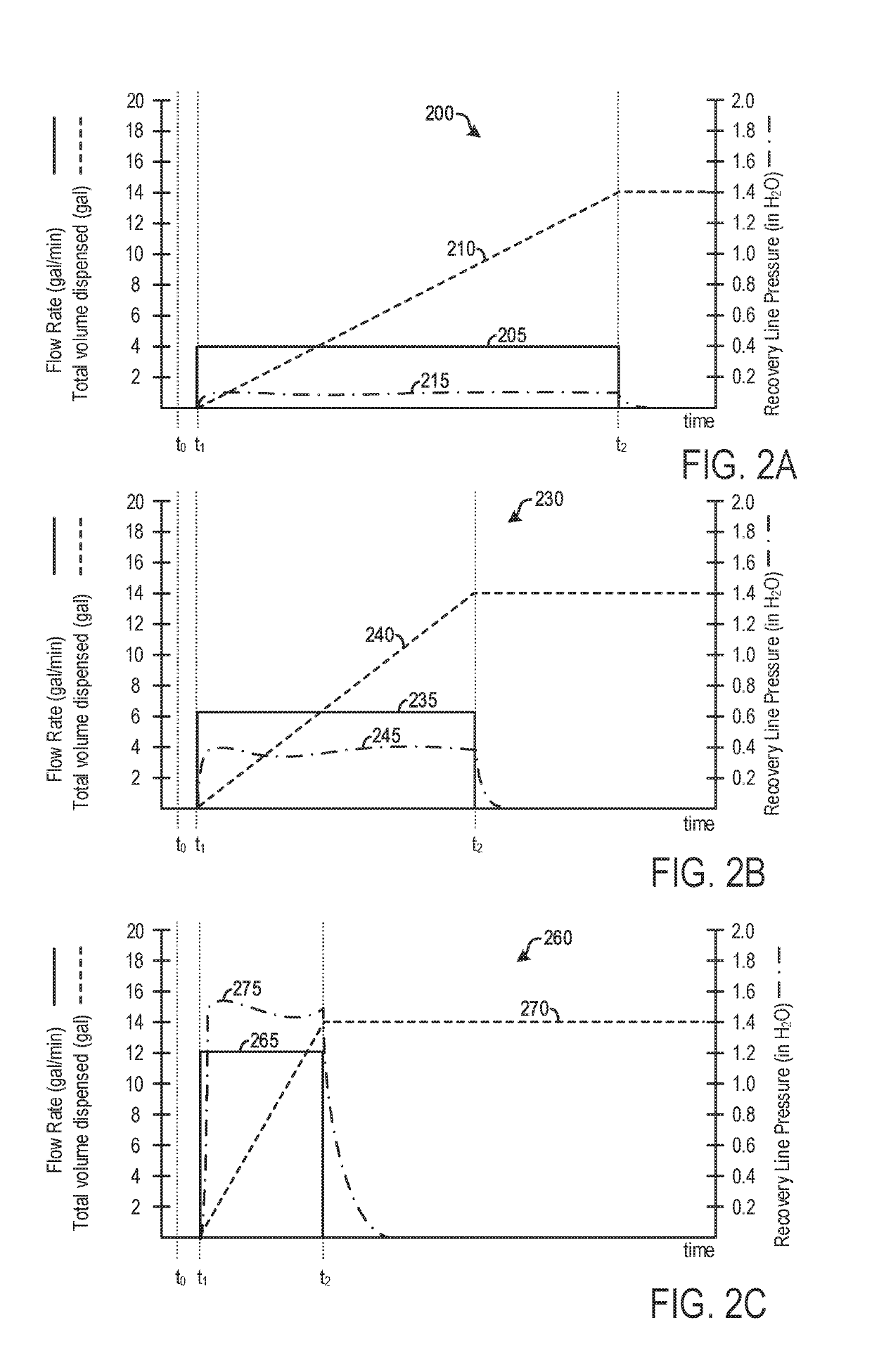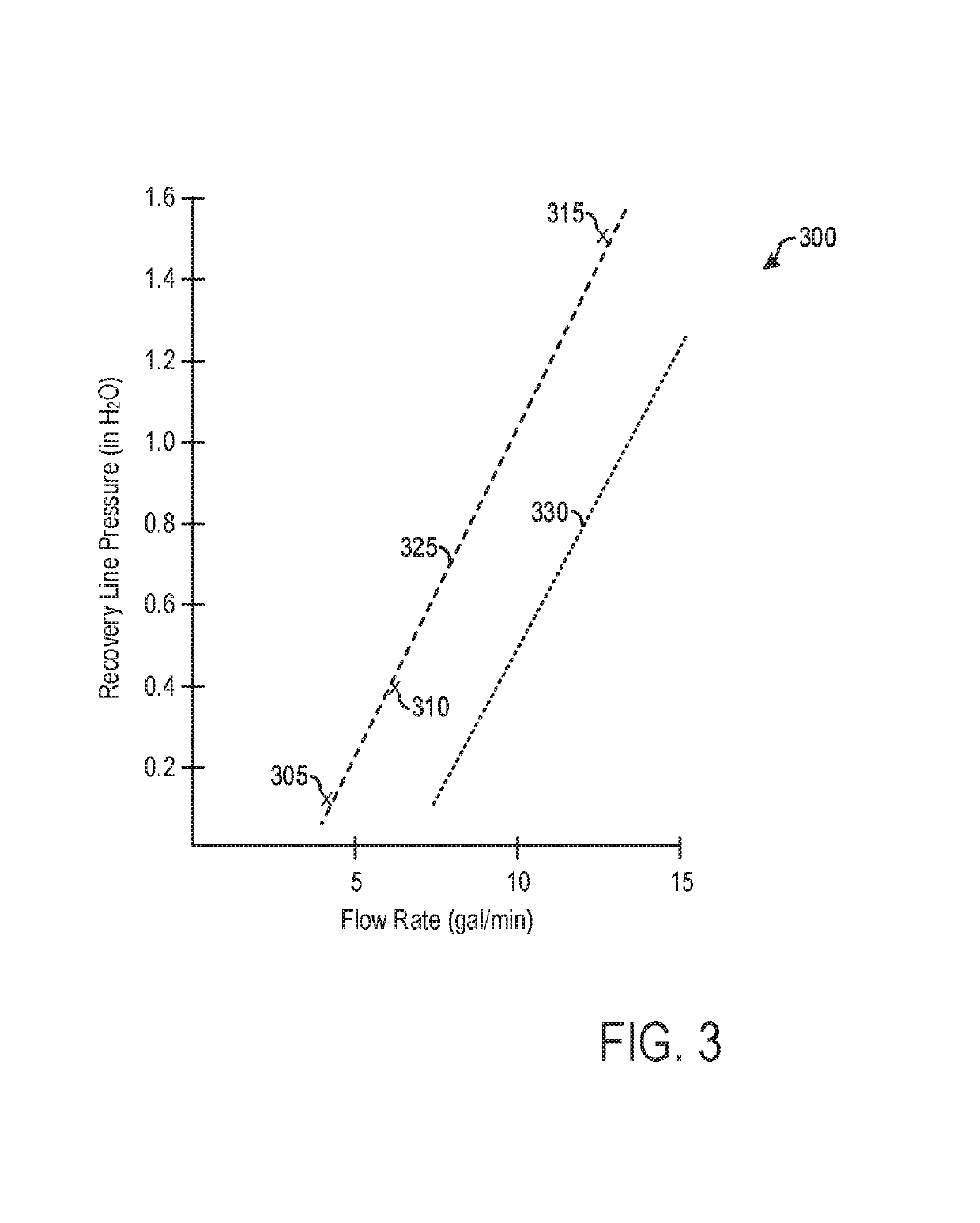Systems and methods for inferring fuel vapor canister loading rate
a technology of fuel vapor canisters and loading rates, which is applied in the direction of machines/engines, combustion air/fuel air treatment, electric control, etc., can solve the problems of limiting limiting the total fuel vapor stored within the fuel vapor canister for a given refueling event, and going undiagnosed, so as to limit the rate of fuel vapor canister loading
- Summary
- Abstract
- Description
- Claims
- Application Information
AI Technical Summary
Benefits of technology
Problems solved by technology
Method used
Image
Examples
Embodiment Construction
[0023]This detailed description relates to systems and methods for inferring a fuel vapor canister load. In particular, the fuel vapor canister load may be inferred based on the steady-state pressure in a vapor recovery line during a refueling event. The fuel vapor canister may be included in a hybrid vehicle, such as a plug-in electric hybrid vehicle, as depicted in FIG. 1. During a refueling event, the steady-state pressure in the vapor recovery line increases proportionately with the fuel dispensing rate, as shown in FIGS. 2A, 2B, 2C, and 3. However, if a blockage exists within the vapor recovery line, the vapor recovery line pressure may be less than expected based on the fuel dispensing rate, as shown in FIG. 3. This relationship may be exploited to determine vapor recovery line degradation, as well as a fuel canister load rate during a refueling event. FIG. 4 shows an example method for determining fuel canister load rate during a refueling event. FIG. 5 shows an example timel...
PUM
 Login to View More
Login to View More Abstract
Description
Claims
Application Information
 Login to View More
Login to View More - R&D
- Intellectual Property
- Life Sciences
- Materials
- Tech Scout
- Unparalleled Data Quality
- Higher Quality Content
- 60% Fewer Hallucinations
Browse by: Latest US Patents, China's latest patents, Technical Efficacy Thesaurus, Application Domain, Technology Topic, Popular Technical Reports.
© 2025 PatSnap. All rights reserved.Legal|Privacy policy|Modern Slavery Act Transparency Statement|Sitemap|About US| Contact US: help@patsnap.com



